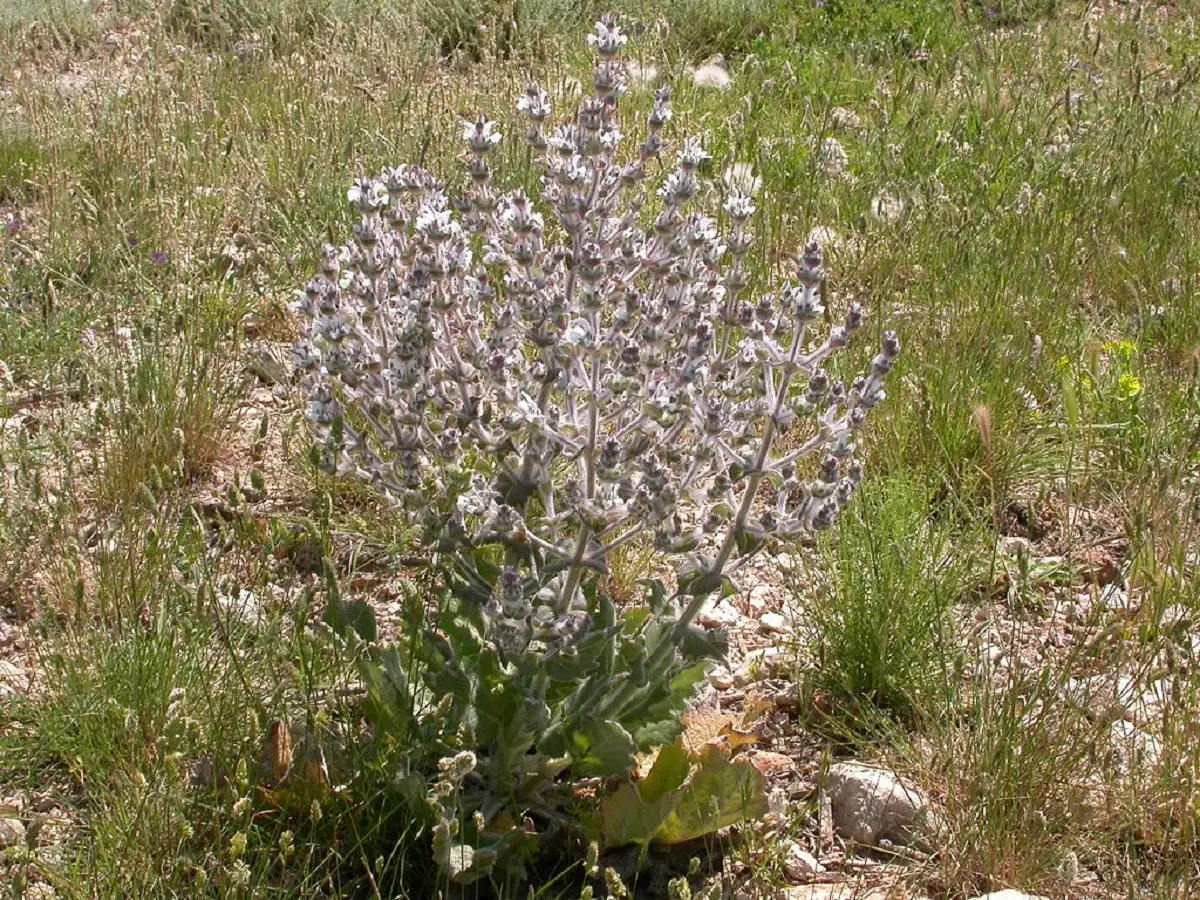
The Ethiopian sageAlso known as Ethiopian sageThis is a grass that is usually found on the edge of the roads and has the particular characteristic of being very hairy.
If goods a plant that is considered a weedis said to have healing properties. In this article we will tell you everything you need to know about this plant: In what habitats it is found, what are its characteristics and what uses are given to the Ethiopian sage.
Description

The Ethiopian sage is itself an herb that it can measure up to 80 centimetersalthough there are also some specimens that do not exceed 60 or 40 centimeters in their entire structure.
One of the main characteristics of its simple and basal leaves is its high density of tector hairs that give it a very particular woolly look.
These basal leaves have a prominent size and are thickened, possessing an ovate and hairy limbus It can measure up to 28 x 26 centimeters and be toothed or crenate.
Their upper surface is regularly greenish and they have a lighter underside, with cordate features and a petiole that reaches approximately 10 centimetersthis being generally a little shorter than the limbus. Its leaves get progressively smaller until they are smaller in size at the top.
Its inflorescence is in the shape of a pyramid and is composed of verticillars that can have between 8 and 10 flowers. Bracts emerge from its flowers They can measure up to 15 x 16 millimeters, although there are also some larger ones. These have a persistent characteristic and can vary in their colors from green to purplish.
The chalice is about 16 millimeters and it presents the characteristic colors of the plant, which are between green and whitish, although sometimes purple-red tones can be found. The lower lip is serrated and these teeth can reach approximately 8 millimeters.
Its corolla varies between white to pinkish colors and the upper lip is compressed on its side. The connective of its stamens is longer than the filament and the upper branch is also longer than the one below.
Uses of Ethiopian sage
This plant is considered a weedwhich grows in grasslands and different types of grass. It is not even considerable as a livestock feed and its rapid weed characteristics and the disturbance of flower communities in the areas where it grows is considered a nuisance.
To control this weed, a weevil known as Phydiuchus Tau, by which it stops the population of Ethiopian sage in places where this means a problem for the surrounding crops.
It has been concluded that this plant is beneficial for all kinds of healing problems and hemorrhoidal problems, among others.
Although its general composition is not known, because it has not been investigated in depth, it is considered that this plant has many properties for treating ulcers and wounds, having a positive inference in the regeneration of cutaneous tissues.
It is widely used for any type of erosion and affections in the legs and arms and also an infusion of its root is used to heal conditions in the throatbeing able to combine it with honey as a tea so that it has a greater effect.
Its way of cooking it is with water and you can cook the whole plant or just its roots. It can be used as a skin ointment or drink it for chest problems.
Flowering

During the flowering process of this plant, which occurs between the months of June and Julyyou will notice a decrease in the size of the leaves, which will rise to the top of the stem and lose their corner.
This is when these become bracts that each pair of bracts will have a total of six flowers. These are the highlights of the Ethiopian sage. Despite being a weed, it has healing properties that you could use to your advantage.
